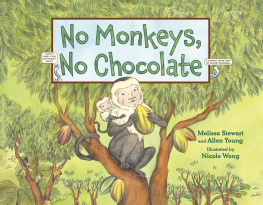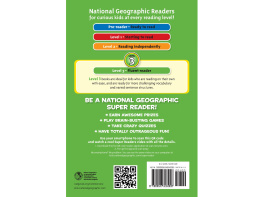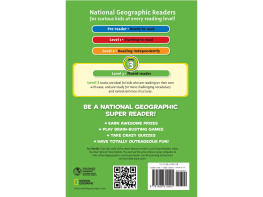Table of Contents
Guide
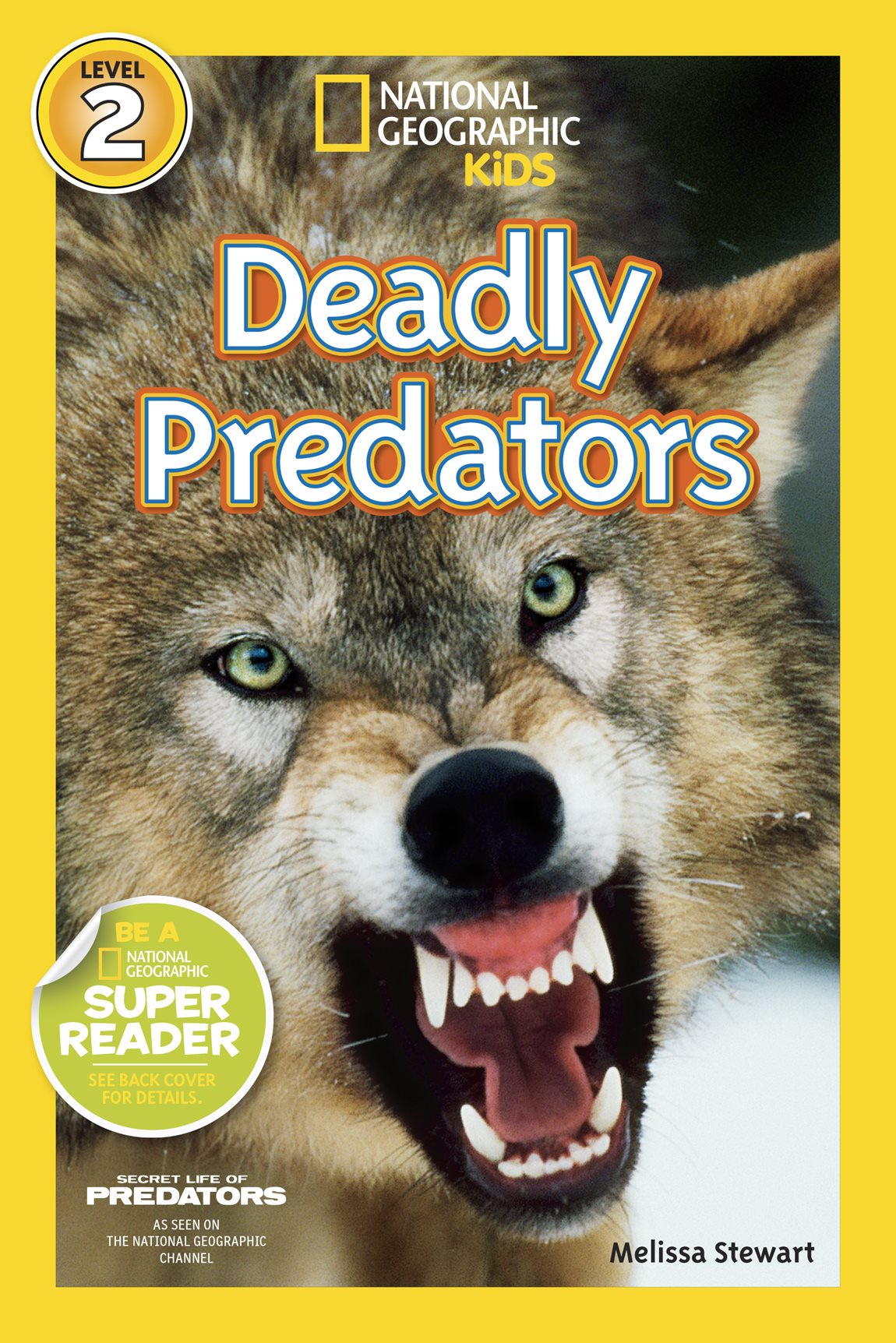

Children are naturally curious about the world around them, and
curiosity is a powerful motivation for reading. Studies show that
informational reading is critical to success in school. National
Geographic Readers allow you to feed your childrens interests
and create readers who not only can read, but also want to read!
To sustain childrens excitement about reading, we have created
a new program called NATIONAL GEOGRAPHIC SUPER READERS.
As kids read each National Geographic Reader, they cross off its
picture on a free National Geographic Super Readers poster that
parents can download from kids.nationalgeographic.com/superreader.
After reading four books, kids and parents go to the website and
download specially designated prizes that reward their effort. Kids
can have even more reading fun online, with lively book-related
quizzes and games, fascinating excerpts, and sneak previews of
upcoming books.
The National Geographic Super Readers program appeals to kids
love of accomplishment while providing them with incentives to
keep reading. When the reading experience is fun, children learn
more and achieve more. What could be better than that?
Sincerely,
Mariam Jean Dreher
Professor of Reading Education
University of Maryland, College Park
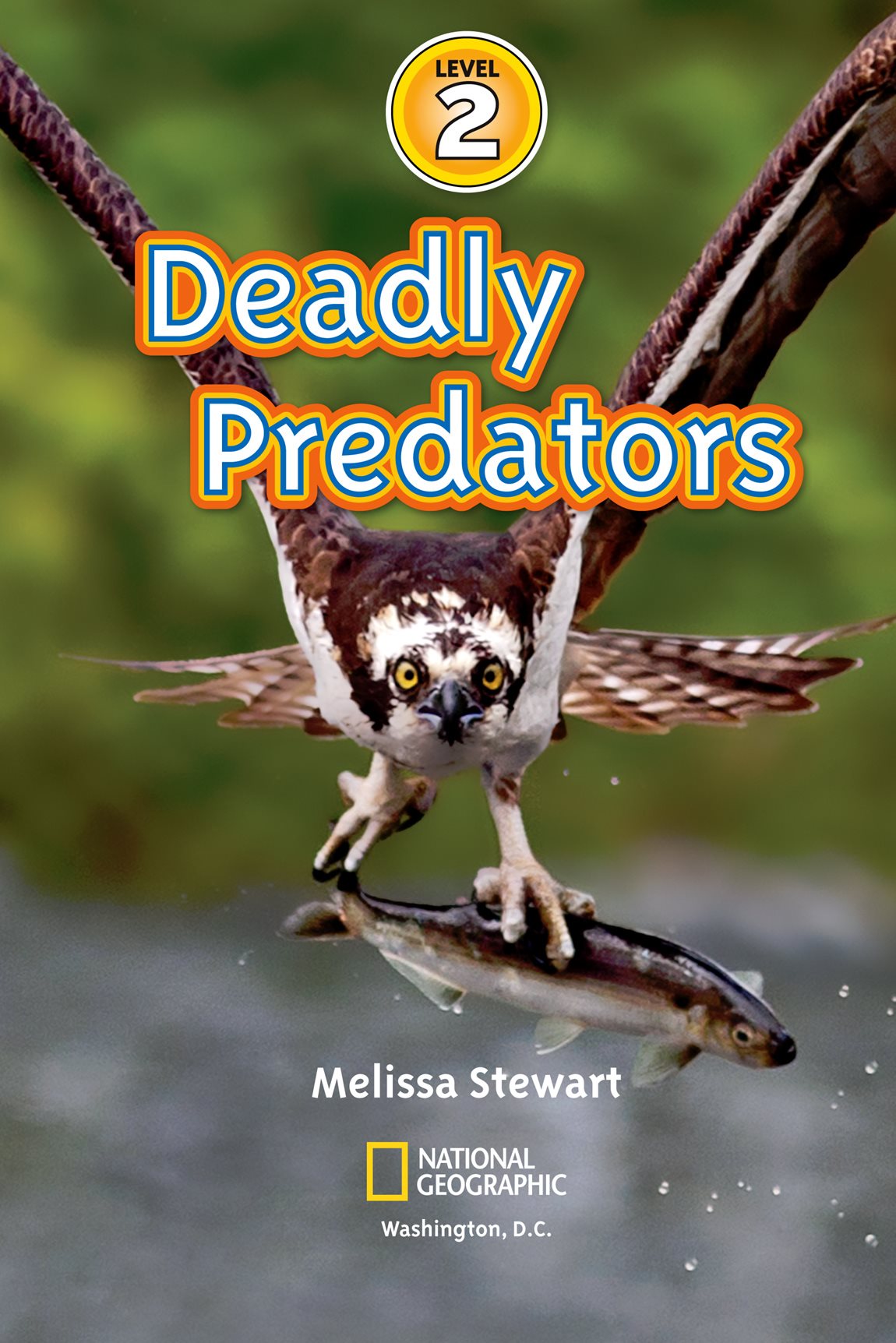
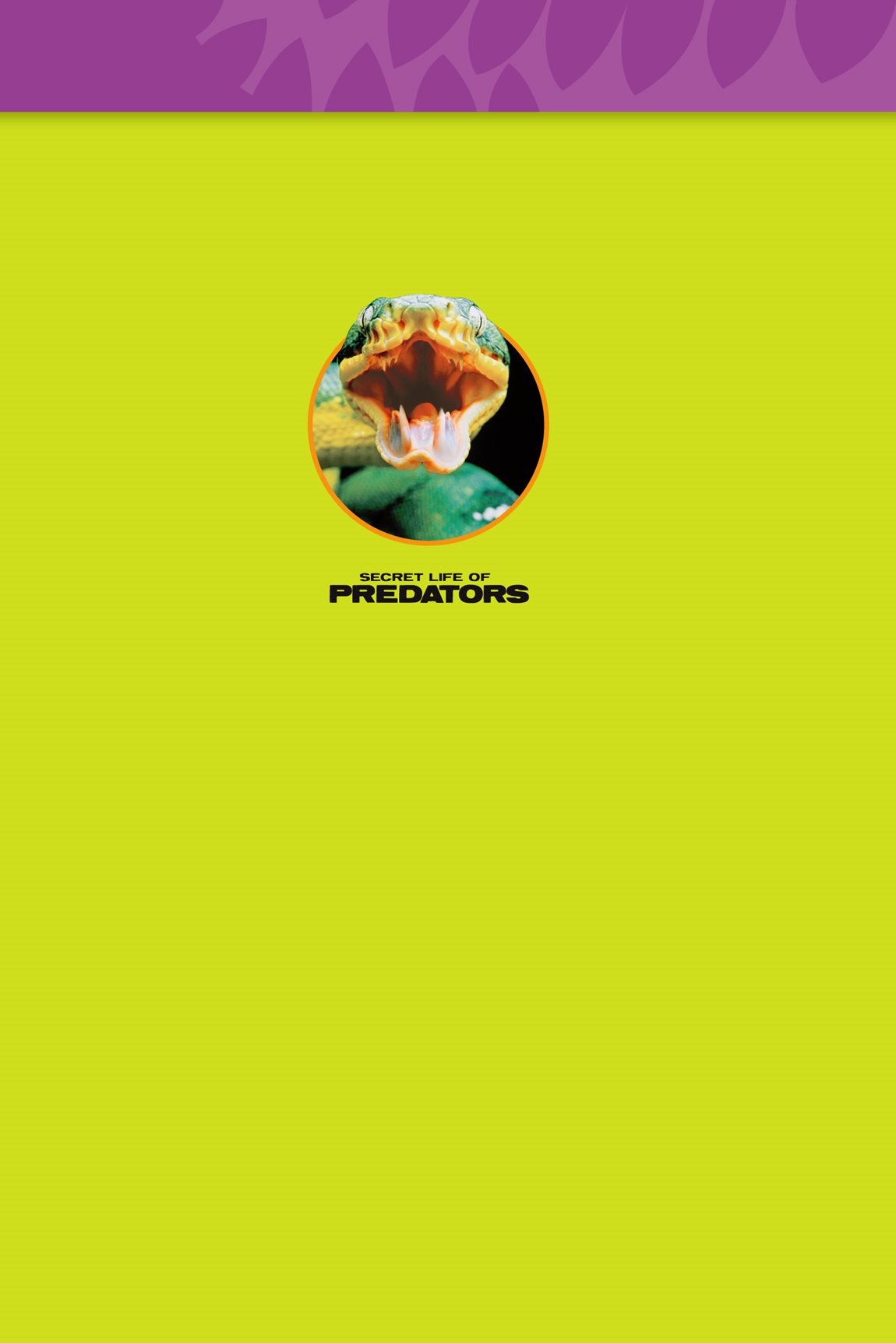
For Tali, one of my favorite predators M. S.
The publisher and author gratefully acknowledge the expert review of this book
by Dr. Bill Swanson of the Cincinnati Zoo in Cincinnati, Ohio, U.S.A.
As seen on the National Geographic Channel
Copyright 2013 National Geographic Society
Published by the National Geographic Society, Washington, D.C. 20036. All rights reserved.
Reproduction in whole or in part without written permission of the publisher is prohibited.
Design by YAY! Design
Paperback ISBN: 978-1-4263-1346-2
Library ISBN: 978-1-4263-1347-9
eBook ISBN: 978-1-4263-1391-2
Photo credits
Cover, Brand X/Getty Images; 1, Sandy Flint/National Geographic My Shot; 2, Kevin Horan/Getty Images; 4, Alaska Stock/
Corbis; 7 (UP), Hans Reinhard/Science Source; 7 (LOLE), Jim and Jamie Dutcher/National Geographic Stock; 7 (LORT), Picture
Press/Alamy; 8, Photo Researchers RM/Getty Images; 8-9, Martin Vavra/National Geographic My Shot; 10, Paul Jarvis/National
Geographic My Shot; 11, Kathleen Reeder/National Geographic My Shot; 1213, Richard Ress/National Geographic My Shot; 14,
Photo Researchers RM/Getty Images; 15 (UP), Anthony Bannister/Gallo Images/Corbis; 15 (CTR), Mint Images RM/Getty Images;
15 (LO), Giovanni Antonio Diaz/National Geographic Stock; 16, Mike Parry/Minden Pictures; 1819, Amos Nachoum/Corbis;
18 (INSET), Sue Flood/npl/Minden Pictures; 20 (UP), Computer Earth/Shutterstock; 20 (UP CTR), Rob Wilson/Shutterstock; 20
(LOCTR), Tom Brakefield/Corbis; 20 (LO), Flickr RF/Getty Images; 21 (UP), Vincent Grafhorst/Foto Natura/Minden Pictures; 21
(LE CTR), risteski goce/Shutterstock; 21 (RT CTR), Walter Nussbaumer/National Geographic My Shot; 21 (LO), Aimee Woodbury/
National Geographic My Shot; 22, Bianca Lavies/National Geographic Stock; 24, Thierry Lombry/National Geographic My
Shot; 26, Manny Ramirez/National Geographic My Shot; 27, Austin Thomas/National Geographic My Shot; 2829, Anup Shah/
naturepl.com; 30 (UP), Eduard Kyslynsky/Shutterstock; 30 (CTR), AnetaPics/Shutterstock; 30 (LO), Ellen C/Shutterstock; 31 (4
UP LE), Photo Researchers RM/Getty Images; 31 (4 UP RT), Visuals Unlimited/Getty Images; 31 (4 LO LE), Flickr RF/Getty Images;
31 (4 LO RT), rujithai/Shutterstock; 31 (5), Simon Pidcock/National Geographic My Shot; 31 (6 UP), Siddhardha Gargie/National
Geographic My Shot; 31 (6 LE), Paul Jarvis/National Geographic My Shot; 31 (6 RT), Amos Nachoum/Corbis; 31 (6 LO), skynet
photo/Shutterstock; 31 (7), Mike Parry/Minden Pictures; 32 (UPLE), Bianca Lavies/National Geographic Stock; 32 (UPRT), Kavun
Kseniia/Shutterstock; 32 (LE CTR), Olga Selyutina/Shutterstock; 32 (RT CTR), EastVillage Images/Shutterstock; 32 (LOLE), Aimee
Woodbury/National Geographic My Shot ; 32 (LORT), Science Faction/Getty Images

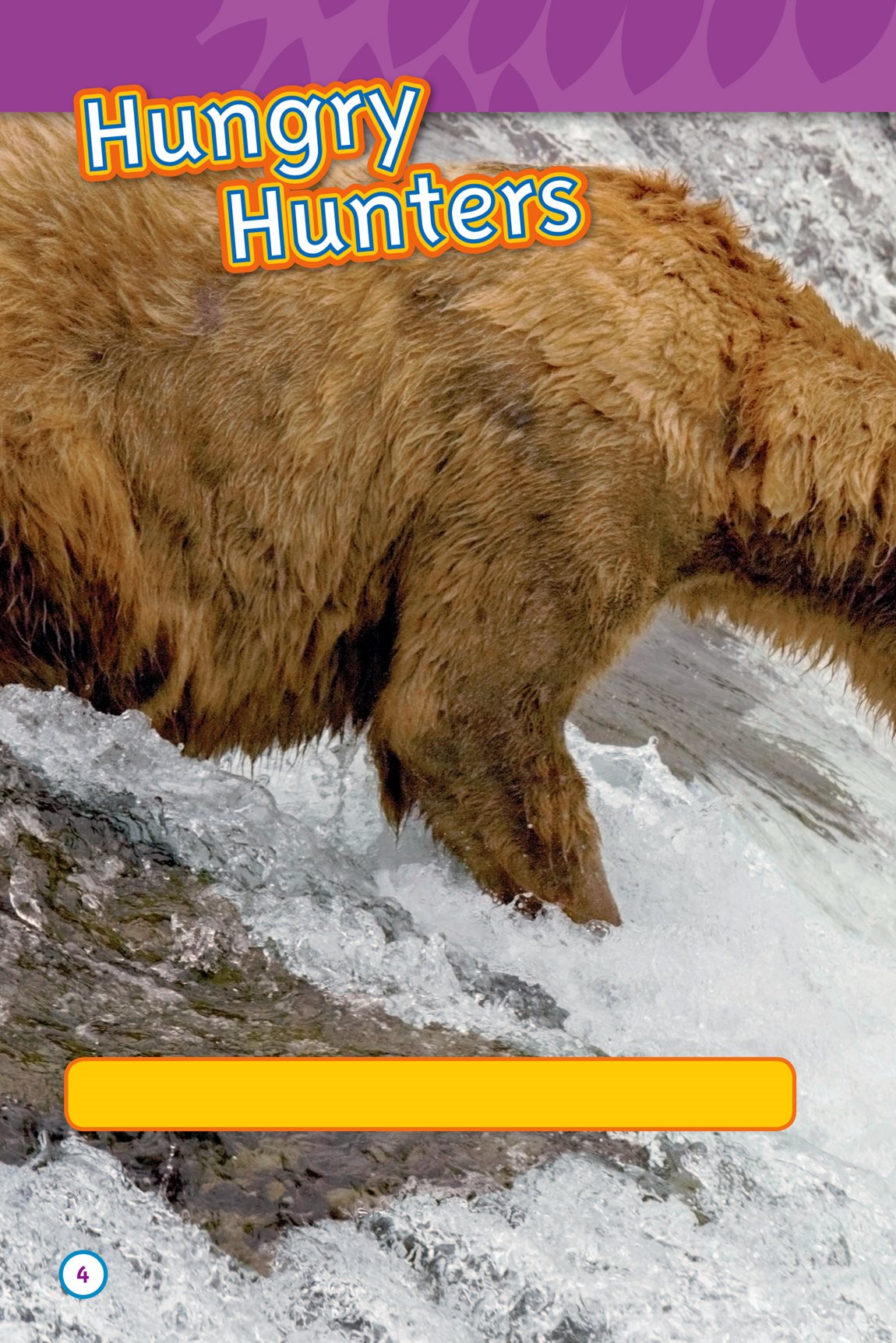
Grizzly bears eat fish and other small animals. They usually weigh
to pounds. The largest bears can weigh pounds!

Wolves chase.
Sharks attack.
Bears lunge.
All these animals are
predators. Theyre all
after the same thing.
Meat. They need it to
live and grow.
Word Bite
PREDATOR: An
animal that hunts
and eats other
animals
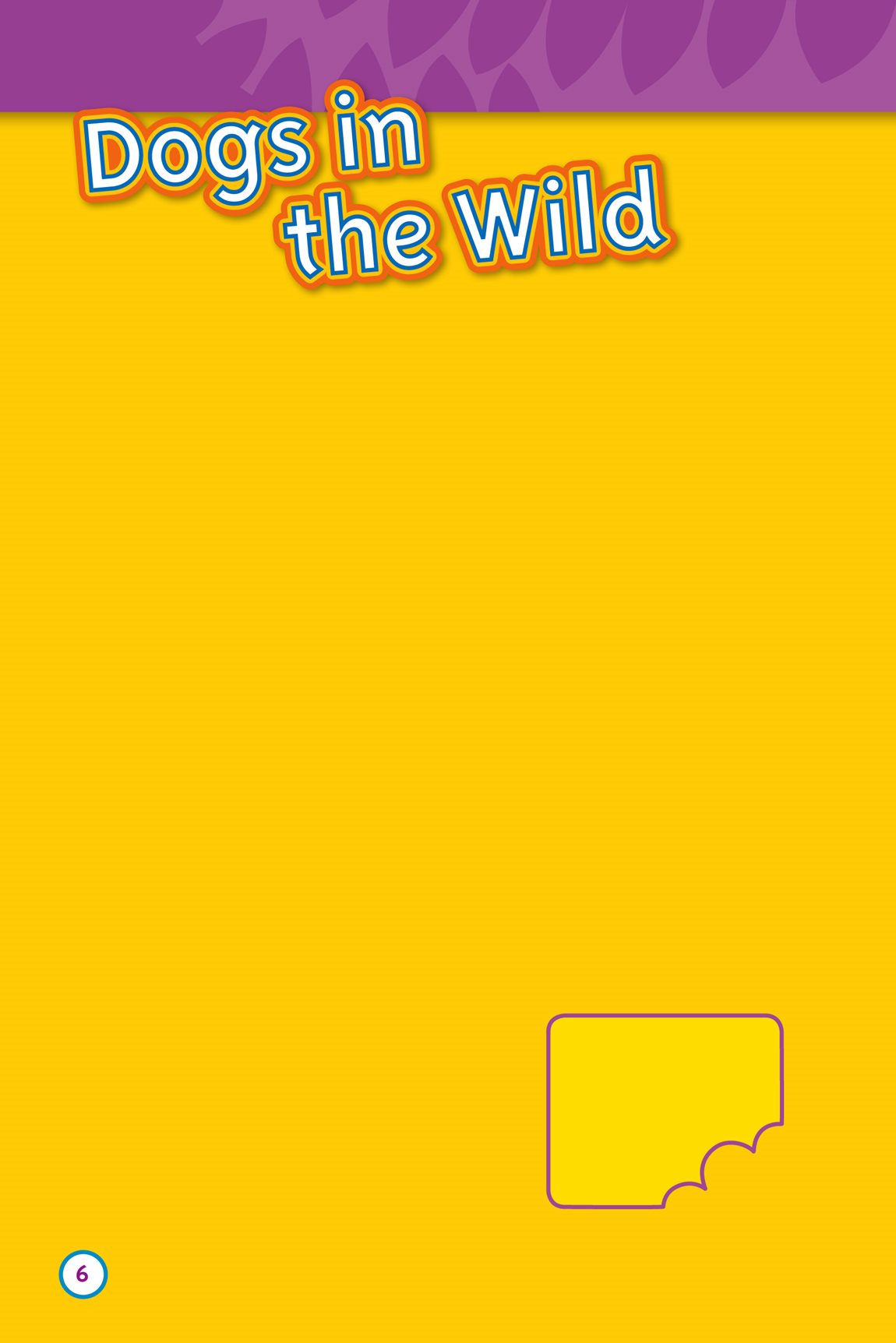
Wolves are members of the dog
family. So are foxes, coyotes,
and African wild dogs. All of these
dogs are powerful predators.
Big ears help wild dogs hear their
prey. Sensitive noses help the dogs
sniff out food.
Wild dogs also have large teeth
and strong jaws.
They can kill prey
larger than themselves.
Word Bite
PREY: An animal
that is eaten
by another
animal

A coyote has teeth. Some can tear flesh. Others can crush bone.
An arctic fox
stalks its prey.
African wild dogs
hunt in packs.
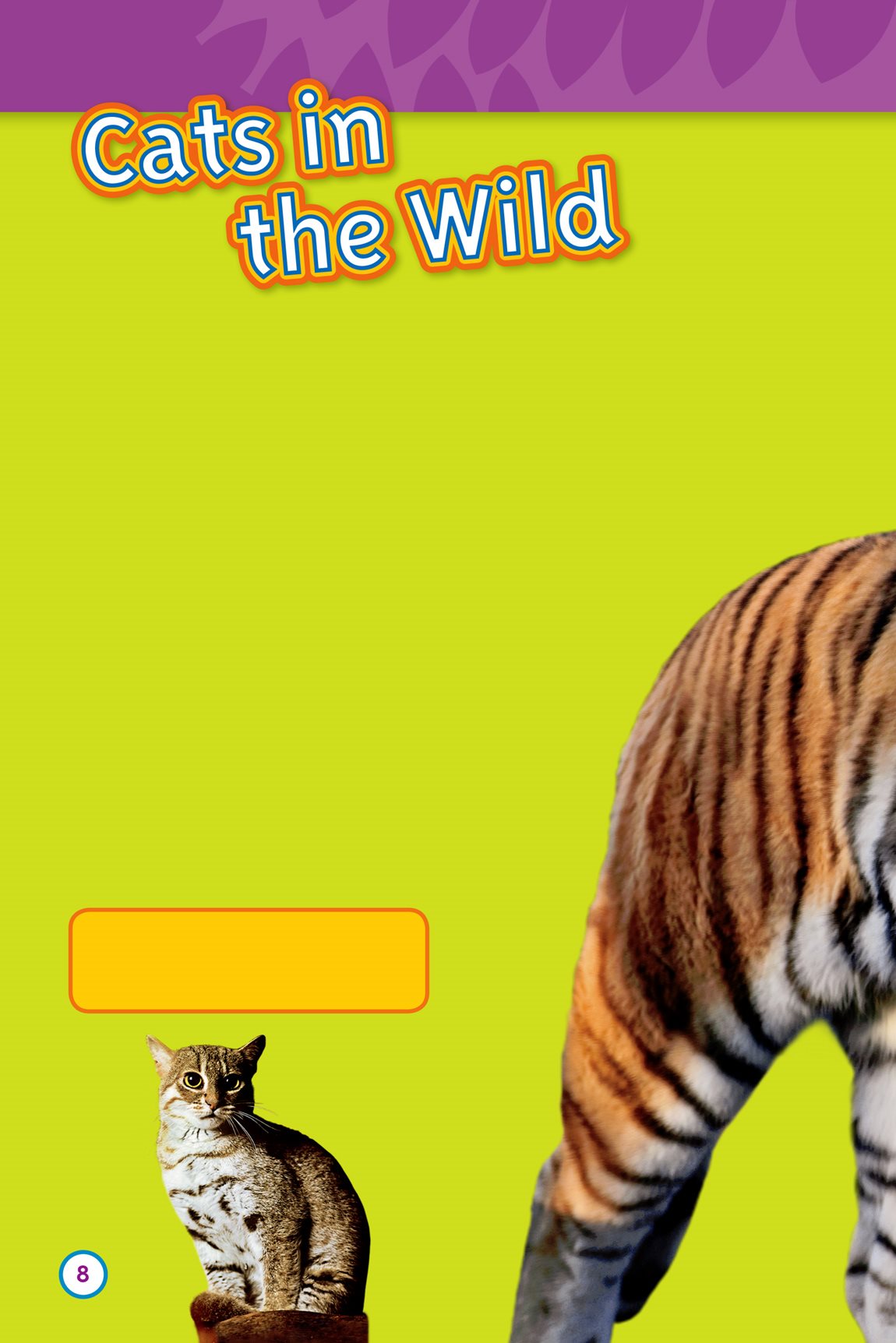
Thirty - six kinds of cats live in the
wild. And theyre all expert hunters.
The rusty - spotted cat is the
smallest. It weighs less
than a half - gallon jug
of milk.
The rusty - spotted cat lives in
India. At night, it hunts for
birds, mice, lizards, and frogs.

What is the biggest cat in the
world? The Siberian tiger. It can
weigh more than three large men.





